Go the extra mile
Towards a cooler planet
USA sustainable development and climate action goals
17 January 2023
The United States is playing a leading role in ocean conservation through initiatives spearheaded by the federal government, non-profits, and local communities. Recent efforts include policies aimed at preserving marine biodiversity, advancing sustainable economic activities, and empowering coastal communities. Programmes such as the National Ocean Biodiversity Strategy and the Sustainable Ocean Economy Plan focus on addressing critical challenges like overfishing, biodiversity loss, and pollution. These initiatives also support Indigenous practices and equitable resource management while promoting ocean-based industries such as renewable energy and sustainable fisheries.
The Biden administration has introduced comprehensive strategies to protect marine resources and support community resilience against environmental challenges. Collaboration with states and local stakeholders ensures that conservation goals are achieved while respecting regional and cultural needs. However, gaps in implementation, such as delayed management plans for marine protected areas, remain a concern, underscoring the need for sustained commitment and funding to realise these ambitious targets.
These multifaceted approaches aim to secure a thriving future for ocean ecosystems and the people who rely on them, demonstrating a strong dedication to tackling environmental and societal challenges.
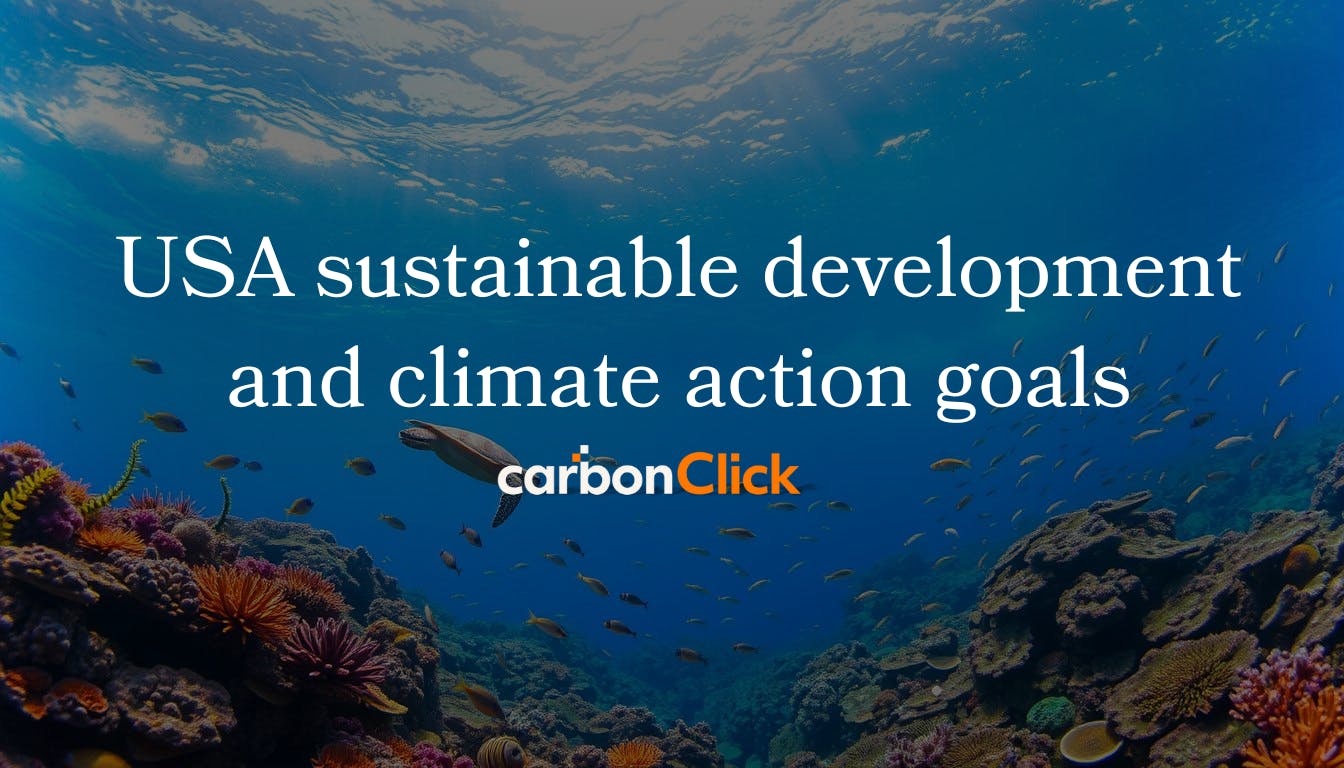
Understanding the importance of ocean conservation
The world's oceans are vital for the Earth's well-being, influencing climate, weather, and supporting life. The United States' efforts towards sustainable development include a strong focus on ocean conservation as a cornerstone of its strategy.
Oceans play a critical role in regulating the planet's systems by absorbing over a quarter of human-generated carbon dioxide and approximately 90% of excess heat. They also sustain diverse ecosystems, which are essential for marine life, from microscopic plankton to massive whales, providing habitats for feeding, breeding, and migration.
Safeguarding these ecosystems ensures their stability and supports the long-term health of natural resources. Additionally, oceans are key to controlling global temperatures and atmospheric conditions, storing large amounts of carbon and redistributing heat.
Maintaining the health of the oceans is integral to the United States' broader environmental objectives and sustainable development ambitions, highlighting their role in preserving biodiversity and supporting livelihoods.
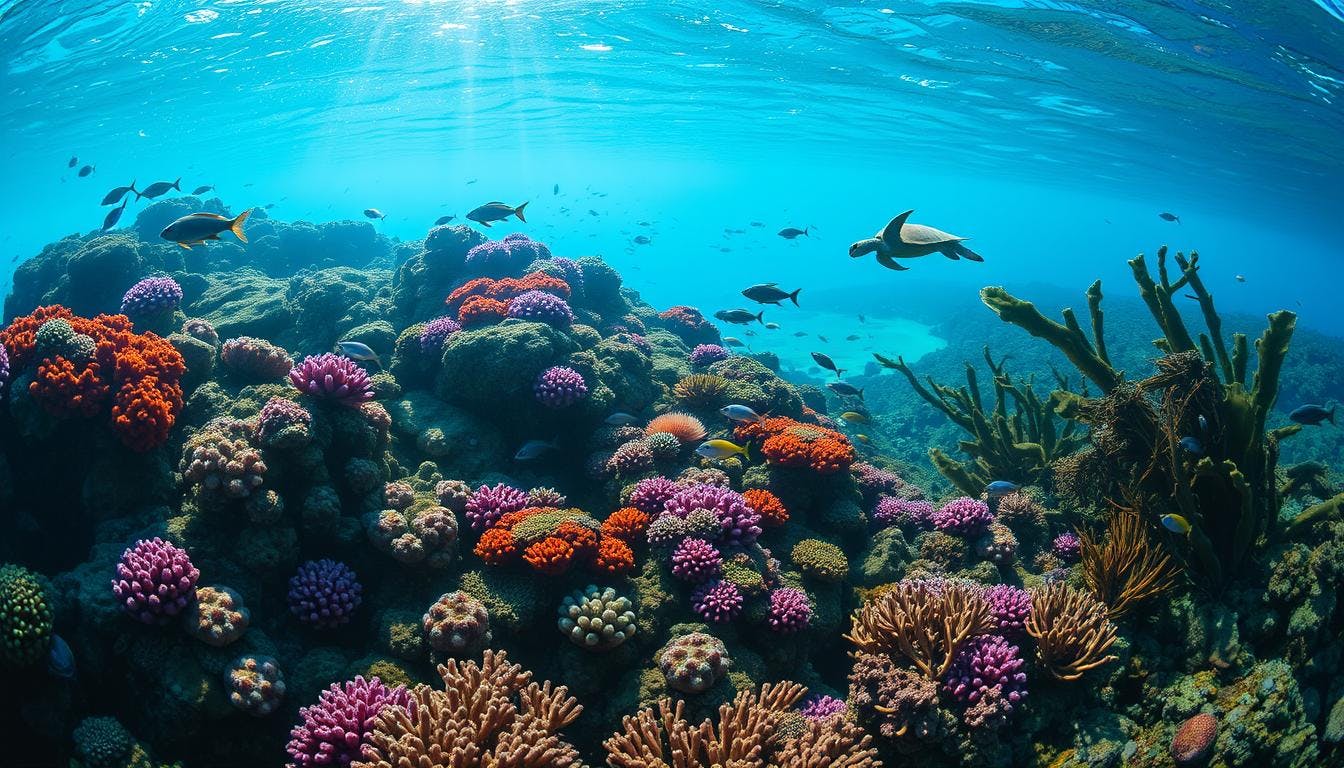
Current state of ocean health in the US
The health of the oceans in the United States remains a significant concern. For years, pollution, overfishing, and the impacts of climate changes have severely affected marine ecosystems. Coastal regions are increasingly experiencing ocean acidification, a phenomenon driven by elevated carbon dioxide levels in the atmosphere. This chemical change in seawater disrupts marine life and threatens the stability of ocean habitats.
The US government, alongside non-profits, has achieved progress in addressing these challenges. Initiatives like stricter pollution regulations and reductions in plastic waste have been steps in the right direction. However, substantial efforts are still required. Reducing carbon emissions, advancing ocean research, improving legislation, and fostering public engagement are critical to safeguarding marine biodiversity and the ecosystems they support.
Major ocean conservation challenges
The USA is making efforts to preserve the health of its oceans, but challenges persist. Overfishing remains a significant issue, with some fish populations declining at alarming rates. Additionally, marine ecosystems face threats from pollution and the impacts of coastal development. These factors disrupt marine habitats and harm biodiversity.
Human activities have placed numerous marine species at risk of extinction. Rising sea levels and ocean acidification, driven by global warming, exacerbate these challenges. Addressing these problems requires comprehensive strategies to reduce harm and restore ecosystems.
For the future, it is vital for the USA to enhance efforts to safeguard marine habitats. This includes adopting sustainable fishing practices and employing advanced technologies for monitoring and mitigating damage. By prioritising these initiatives, the USA can ensure its oceans remain viable for generations to come.
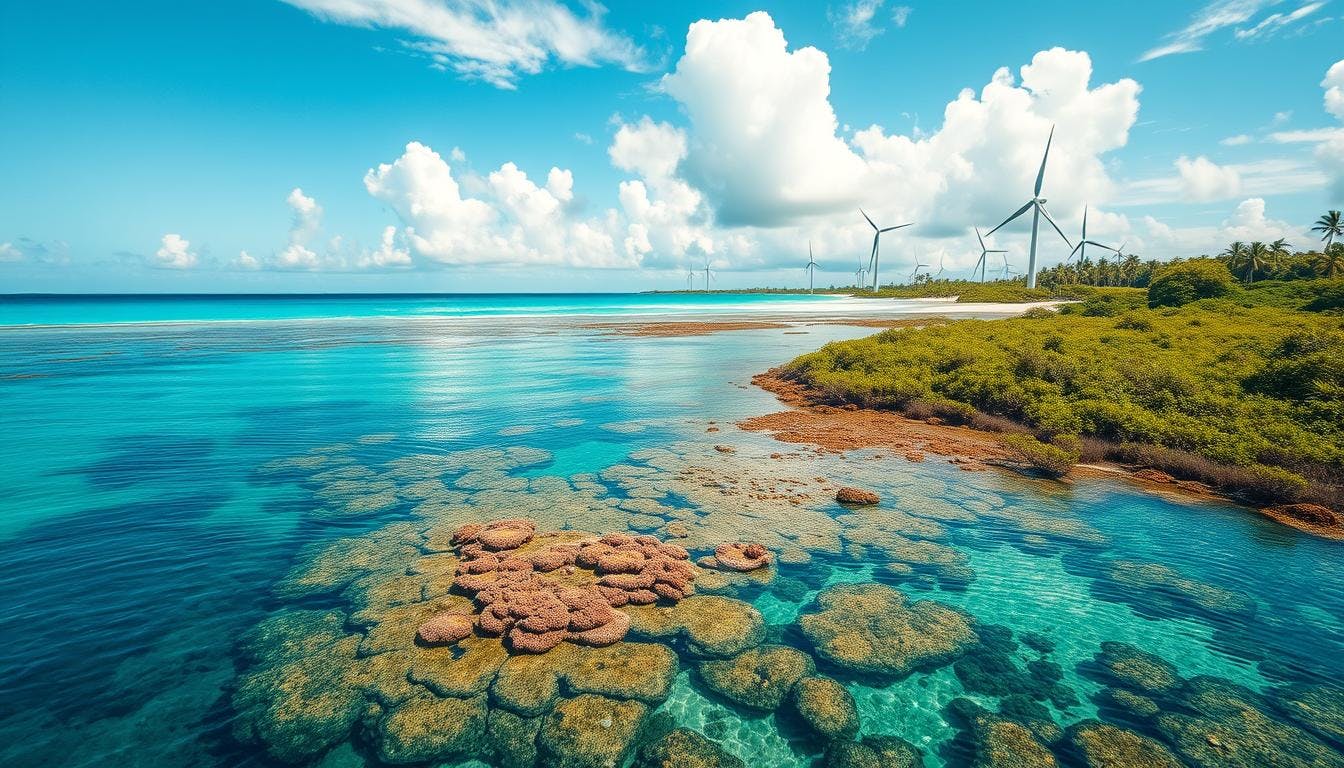
Government policies addressing ocean conservation
The United States government has established several significant policies and laws to safeguard ocean ecosystems. These efforts align with national sustainable development goals and underline a strong dedication to preserving natural resources.
Key legislation includes the Clean Water Act, which regulates pollutants in surface waters, and the Marine Protection, Research, and Sanctuaries Act, which restricts ocean dumping. The Coastal Zone Management Act encourages the conservation of coastal ecosystems through state and tribal participation. Moreover, the US supports marine protected areas and initiatives to reduce marine debris. These measures demonstrate a holistic approach to addressing marine challenges while promoting resource preservation.
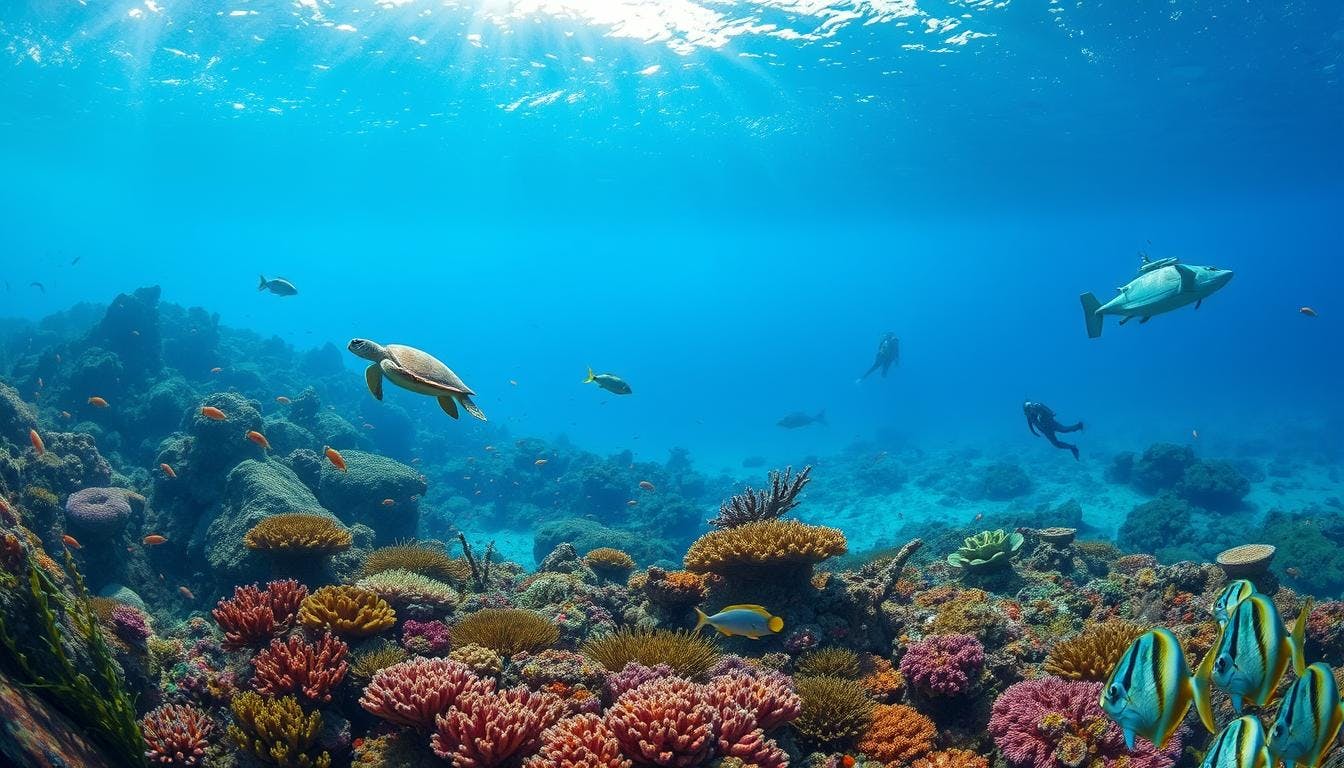
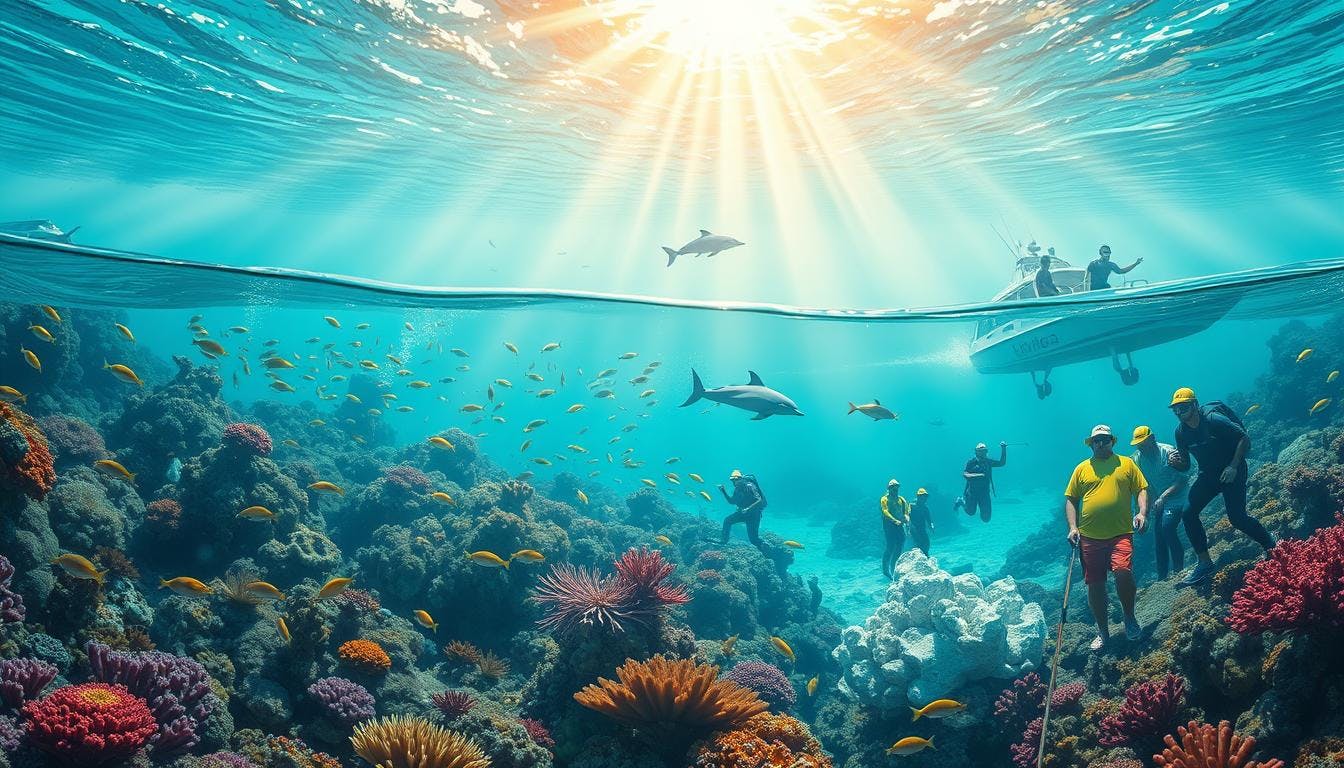
The role of nonprofit organizations
Nonprofit organisations in the United States play a significant role in marine conservation. These groups initiate diverse projects that range from small-scale community efforts to national-level initiatives. For instance, organisations like The Nature Conservancy collaborate with local communities to protect marine habitats, restore ecosystems such as coral reefs and oyster beds, and promote sustainable fisheries. They also leverage technology and scientific innovation to enhance conservation efforts, such as using mapping tools and automated species recognition for better resource management.
These nonprofits also advocate for robust environmental policies. By engaging with lawmakers and influencing policy decisions, they ensure marine conservation remains a priority. The Nature Conservancy's success in establishing protected areas, such as the Kristin Jacobs Coral Reef Ecosystem Preserve, demonstrates the impact of these efforts.
Community engagement in ocean protection
Community engagement is indeed essential in ocean conservation efforts in the USA. Local grassroots groups and non-profits play a key role in protecting marine ecosystems, driving important initiatives that align with national goals for sustainable development. Through educational programmes, clean-up activities, and the promotion of responsible practices, communities are making a significant impact. Local non-profits and volunteers are particularly focused on restoring habitats, advocating for sustainable fishing, and ensuring better environmental practices, which support long-term conservation goals.
Numerous groups also work closely with policymakers to encourage stronger regulations that protect marine life. Through such collective action, these community efforts not only help preserve ecosystems but also contribute significantly to addressing broader environmental concerns. Collaboration with local governments and the public ensures that these efforts can be sustained, strengthening the US's commitment to ocean protection.
For further details, you can explore how organisations like The Nature Conservancy and USAID are supporting such efforts.
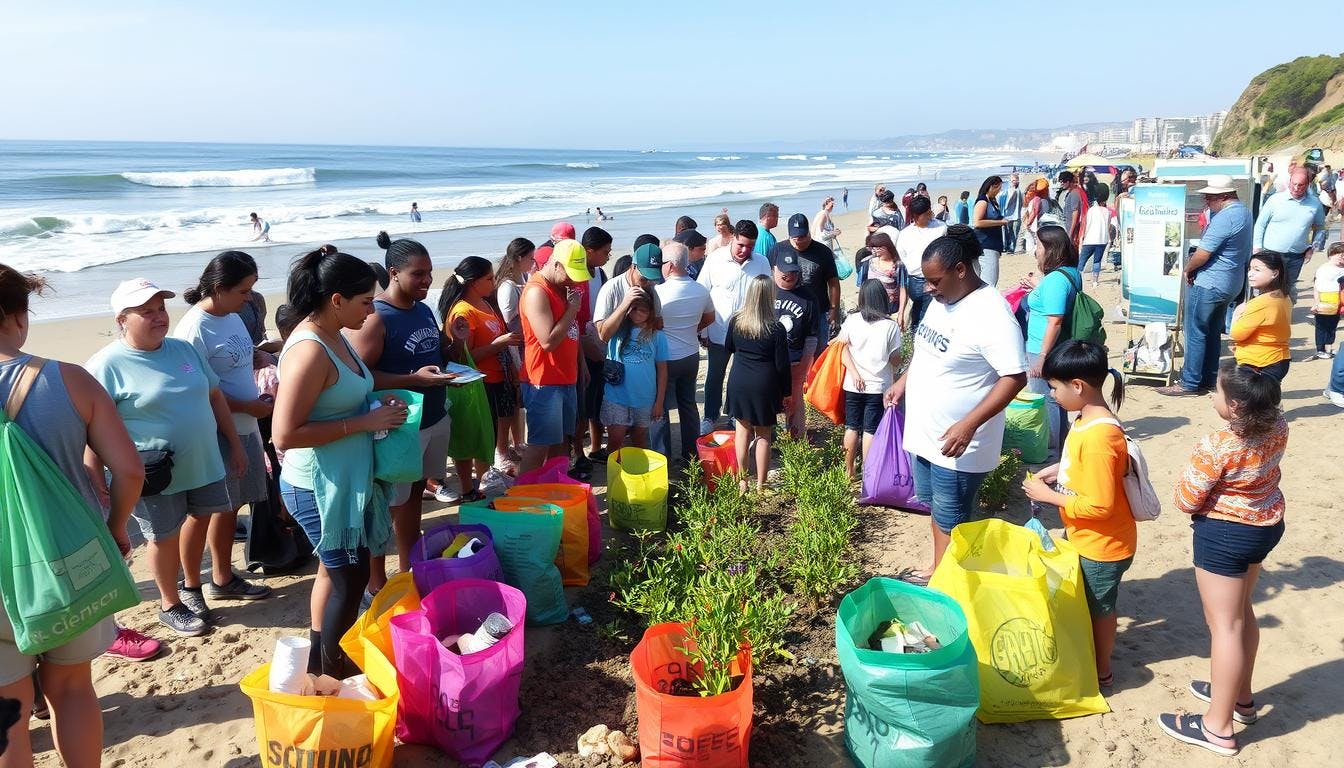
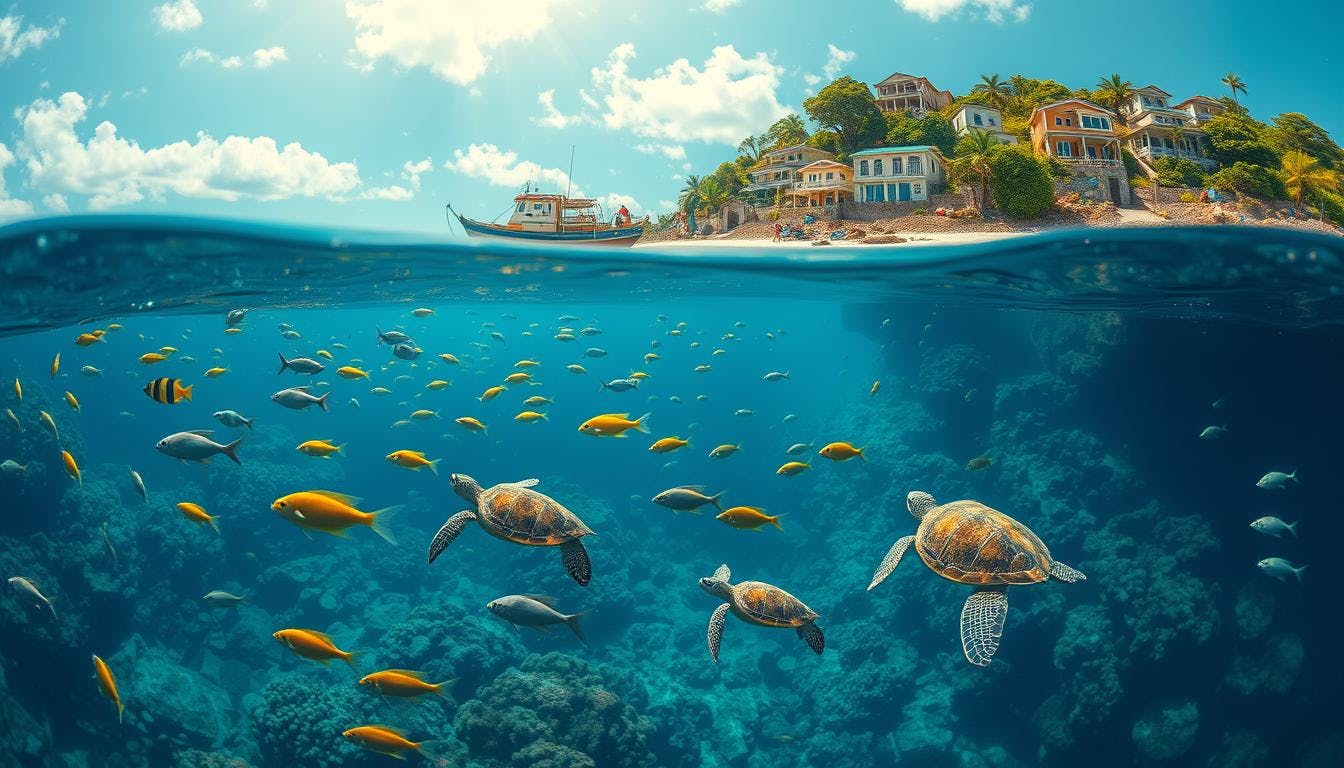
Sustainable practices to support ocean health
The United States has been implementing various sustainable practices to protect its oceans, focusing on responsible fishing, agriculture, and tourism. These efforts are crucial for marine conservation. Sustainable fisheries management has been a major focus, with policies aimed at preventing overfishing, rebuilding fish populations, and ensuring long-term marine health.
One key area is responsible fishing, which helps reduce harm to marine life. The Magnuson-Stevens Fishery Conservation and Management Act plays a vital role in ensuring that fisheries are managed sustainably, allowing fish populations to recover and thrive.
Additionally, organic farming and efficient water use help prevent harmful chemicals from entering waterways, contributing to healthier ocean ecosystems.
Responsible tourism, including activities like whale watching and snorkelling, provides both enjoyment and protection. Supporting businesses that prioritise sustainability helps further these goals.
These initiatives, supported by government and non-profit organisations, ensure that the USA’s oceans are safeguarded for future generations.
Innovative technologies for ocean monitoring
The United States is indeed using advanced technologies to protect its oceans. These tools play a crucial role in environmental conservation and monitoring, which includes supporting clean energy initiatives.
Remote sensing is central to ocean health monitoring, allowing scientists to collect data without being physically present. Technologies like satellites and drones help track ocean conditions and detect changes in marine ecosystems, such as shifts in temperature and water quality. Autonomous underwater vehicles (AUVs) and uncrewed surface vessels (USVs) contribute to this effort by gathering data on water conditions, which reduces the need for direct human involvement and minimizes carbon emissions.
Drones, equipped with cameras and sensors, further assist by monitoring coastlines and marine life. These devices can quickly identify environmental threats, such as oil spills or illegal fishing activities.
This integration of technology underpins the United States' commitment to ocean preservation and its broader goals of environmental conservation.
These efforts demonstrate how technological advancements are instrumental in safeguarding marine ecosystems, ensuring that the oceans remain healthy for future generations.
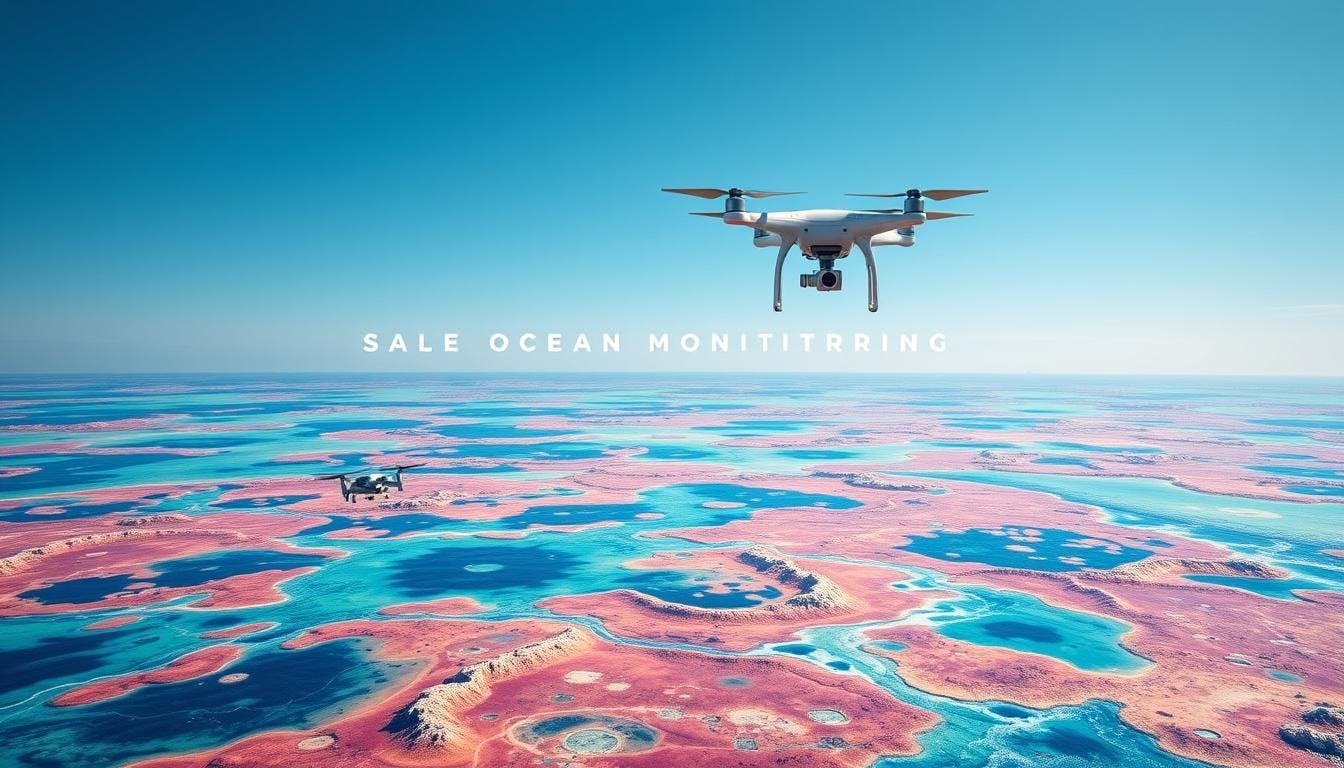
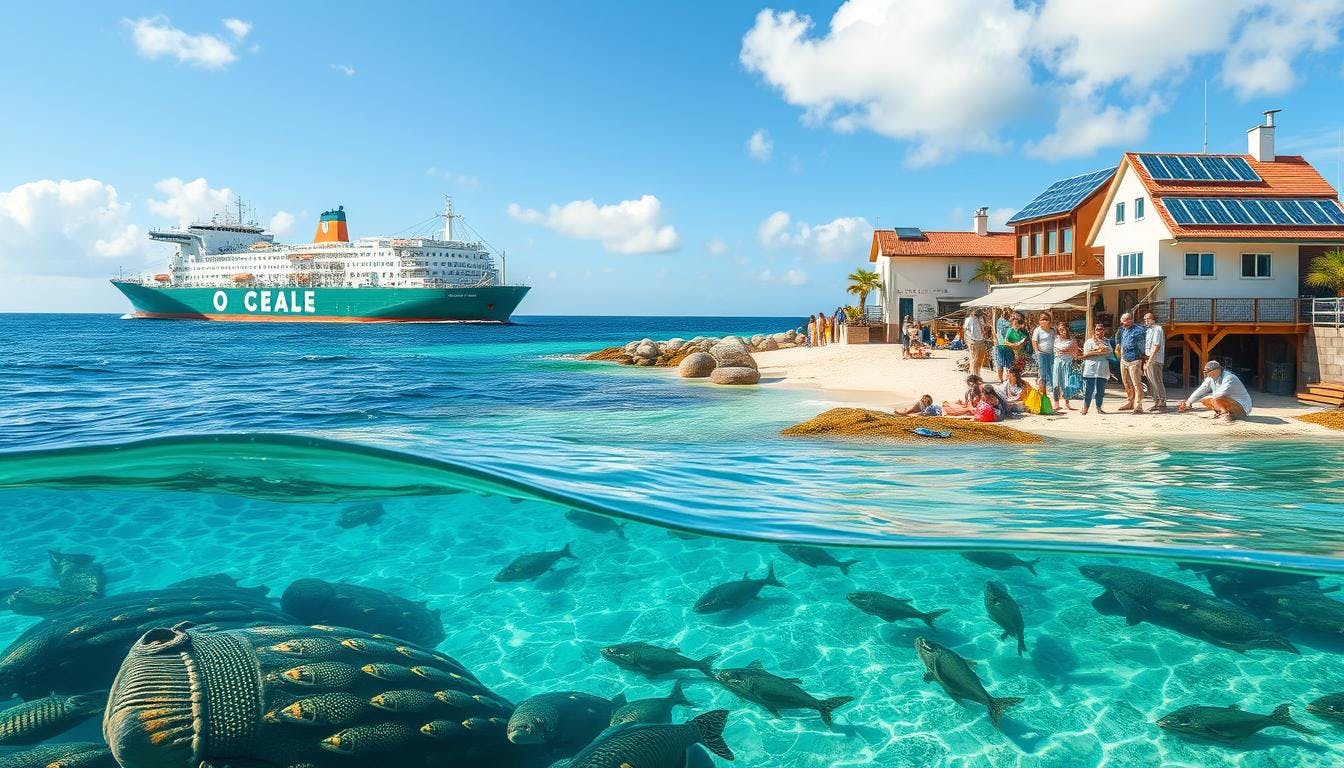
Involvement of businesses in ocean action
The USA is indeed making significant strides in integrating business efforts to protect the oceans and reduce carbon emissions. Many companies have taken proactive measures to support ocean conservation and contribute to the broader goals of sustainable development.
For instance, businesses across sectors are focusing on energy efficiency and reducing their carbon footprints, which aligns with the nation’s environmental objectives. In particular, renewable energy companies are driving significant changes. An example is XYZ Corporation, which uses solar panels to save energy, reduces waste and water use, and supports ocean conservation through contributions and volunteer efforts aimed at cleaning coastal areas and protecting marine habitats.
Shipping companies, like ABC Shipping, have also made notable improvements by reducing fuel consumption and emissions, further supporting the USA's environmental goals. Additionally, they partner with charities to raise awareness about ocean protection among their staff and customers, contributing to a shared responsibility for environmental conservation.
These corporate actions illustrate the growing commitment of businesses in the USA to safeguard marine ecosystems, which is essential for future generations. By adopting sustainable practices and supporting conservation initiatives, these companies are not only helping preserve the oceans but also playing a crucial role in the country's journey towards a more sustainable future.
Advocating for climate action at the local level
Local communities in the USA are increasingly pivotal in advancing environmental sustainability. Grassroots movements and local groups are at the forefront, driving change through efforts such as area clean-ups, promoting renewable energy, and engaging in habitat restoration projects.
These actions are vital not only for improving local environments but also for contributing to larger national goals regarding climate preparedness and environmental health.
Collaborations between local communities, businesses, and non-profit organisations are particularly effective in addressing pressing environmental issues. These partnerships combine resources and expertise to facilitate small-scale projects and implement larger, sustainable urban plans. Examples of such initiatives include improving air quality, expanding sustainable spaces, and enhancing energy efficiency across communities.
Community involvement fosters a sense of collective responsibility, encouraging individuals and organisations to adopt environmentally conscious behaviours. By working together, local efforts can have a profound impact, significantly contributing to the preservation and restoration of vital ecosystems like oceans and coastlines.
This interconnectedness of local actions reinforces the message that sustainable change begins within communities, with each small step collectively building towards a more sustainable future.

Future steps for ocean conservation in the US
The United States is actively working to address climate change and support sustainable development, with a key focus on protecting marine environments. Experts emphasise the need for ambitious goals for marine protected areas, which will help safeguard more of the nation’s coastal and offshore ecosystemsch and monitoring play a crucial role in assessing the health of US oceans. Increased funding for scientific research and emerging technologies like remote sensing and autonomous underwater vehicles are essential to improving ocean conservation efforts . These le more informed decision-making to protect marine life.
For future success in ocean conservation, stronger laws, new energy solutions, and improved strategies for managing climate change are necessary. Collaborative efforts in these areas will help ensure the long-term health of the oceans and contribute to a more sustainable planet for all.
17 South Street
Auckland 1010
New Zealand
info@carbonclick.com- -
- X
Sign up. Be inspired. Get clicking.
Subscribe now to stay up to date with CarbonClick, carbon offsetting and climate action.
By signing up you agree to our Privacy Policy.


